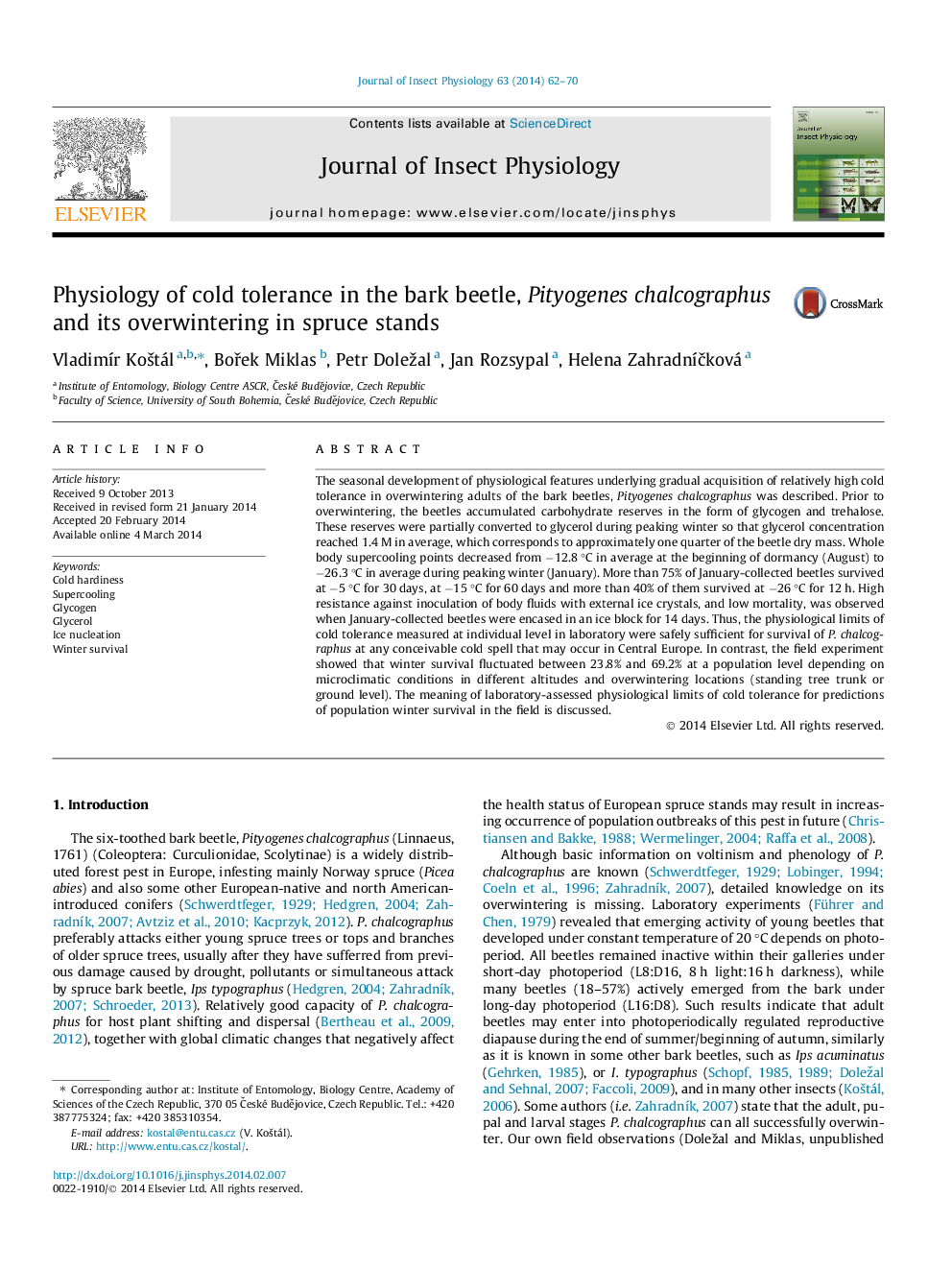| Article ID | Journal | Published Year | Pages | File Type |
|---|---|---|---|---|
| 2840444 | Journal of Insect Physiology | 2014 | 9 Pages |
•Pityogenes chalcographus converts glycogen and trehalose to glycerol in winter.•High concentrations of glycerol help increasing the supercooling capacity.•Beetles avoid freezing and, theoretically, can survive any conceivable winter cold.•Field data, however, show that winter survival ranges from 24% to 69%.•Meaning of laboratory-assays for field-survival estimation is discussed.
The seasonal development of physiological features underlying gradual acquisition of relatively high cold tolerance in overwintering adults of the bark beetles, Pityogenes chalcographus was described. Prior to overwintering, the beetles accumulated carbohydrate reserves in the form of glycogen and trehalose. These reserves were partially converted to glycerol during peaking winter so that glycerol concentration reached 1.4 M in average, which corresponds to approximately one quarter of the beetle dry mass. Whole body supercooling points decreased from −12.8 °C in average at the beginning of dormancy (August) to −26.3 °C in average during peaking winter (January). More than 75% of January-collected beetles survived at −5 °C for 30 days, at −15 °C for 60 days and more than 40% of them survived at −26 °C for 12 h. High resistance against inoculation of body fluids with external ice crystals, and low mortality, was observed when January-collected beetles were encased in an ice block for 14 days. Thus, the physiological limits of cold tolerance measured at individual level in laboratory were safely sufficient for survival of P. chalcographus at any conceivable cold spell that may occur in Central Europe. In contrast, the field experiment showed that winter survival fluctuated between 23.8% and 69.2% at a population level depending on microclimatic conditions in different altitudes and overwintering locations (standing tree trunk or ground level). The meaning of laboratory-assessed physiological limits of cold tolerance for predictions of population winter survival in the field is discussed.
Graphical abstractBark beetle, Pityogenes chalcographus galleries in the spruce bark phloem (photo: Jan Rozsypal). Overwintering adults convert glycogen and trehalose reserves to very high levels of cryoprotectant glycerol (left diagram shows seasonal increase of glycerol concentration), which helps to decrease the supercooling point (SCP, right diagram) and, consequently, avoid lethal freezing. (Pale beetles with immature cuticle are represented by white columns and dark beetles by black columns. Pale and dark beetles were pooled for glycerol analysis.)Figure optionsDownload full-size imageDownload as PowerPoint slide
